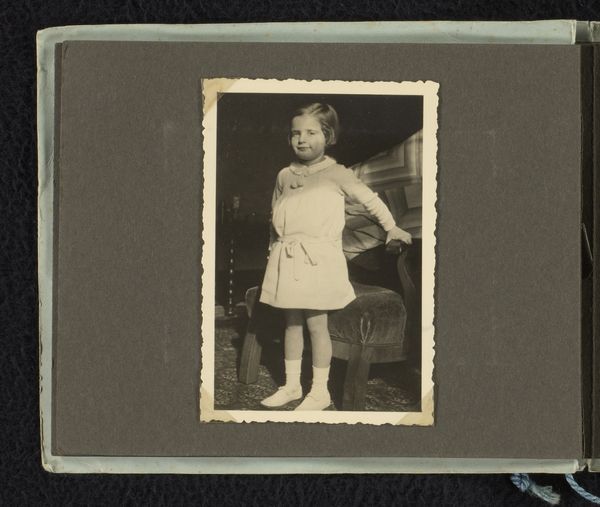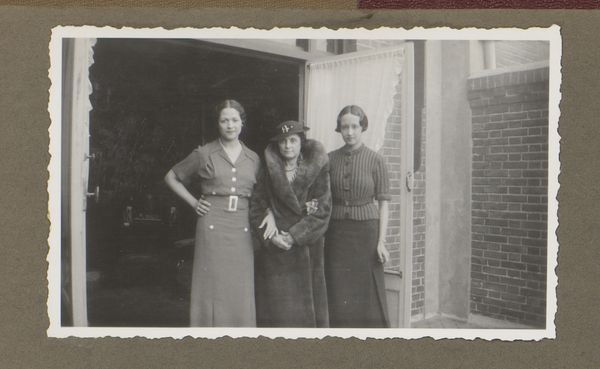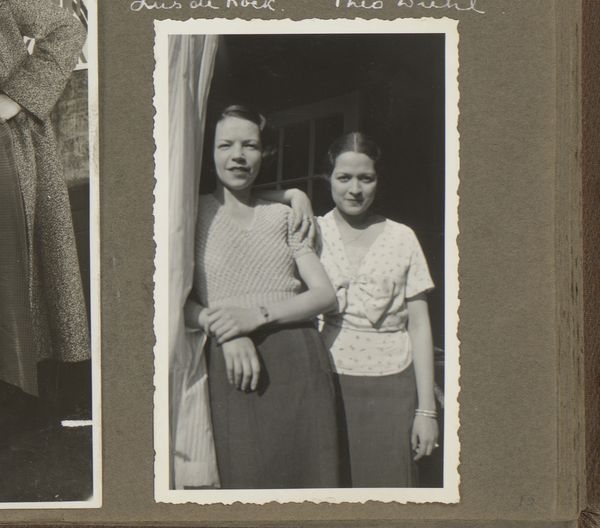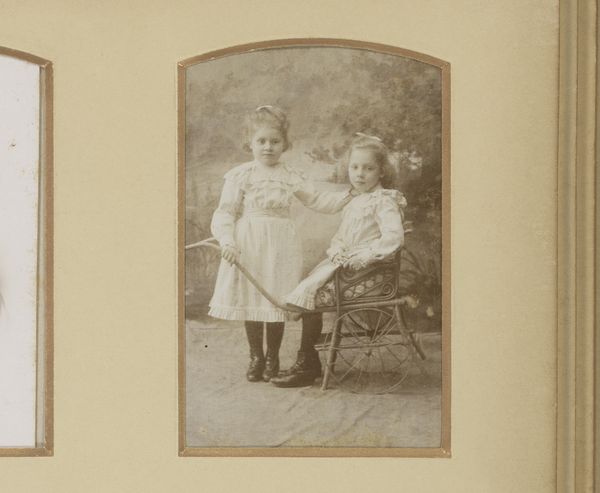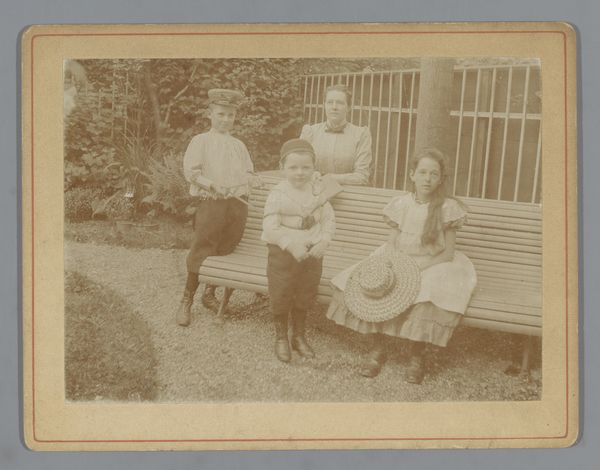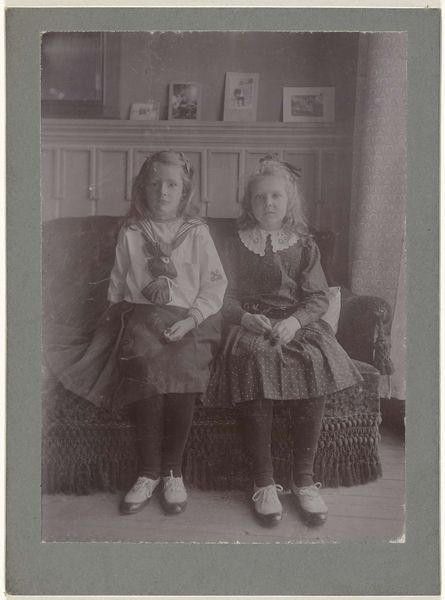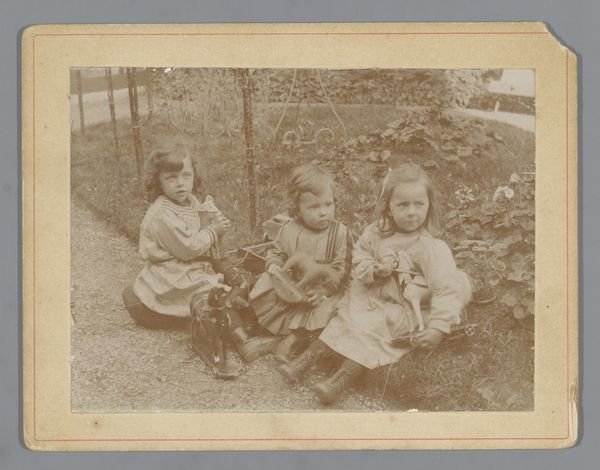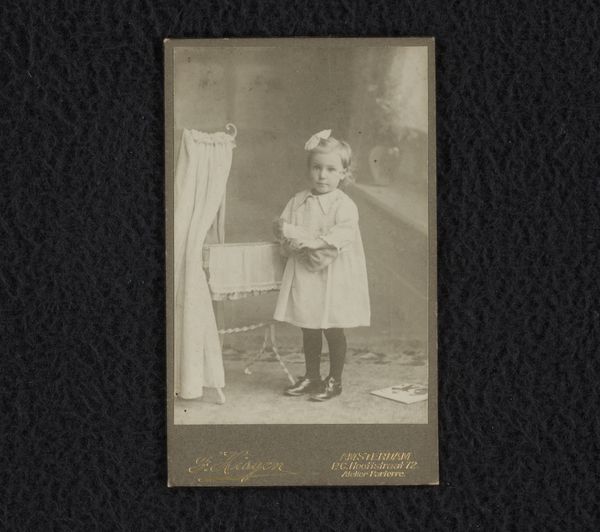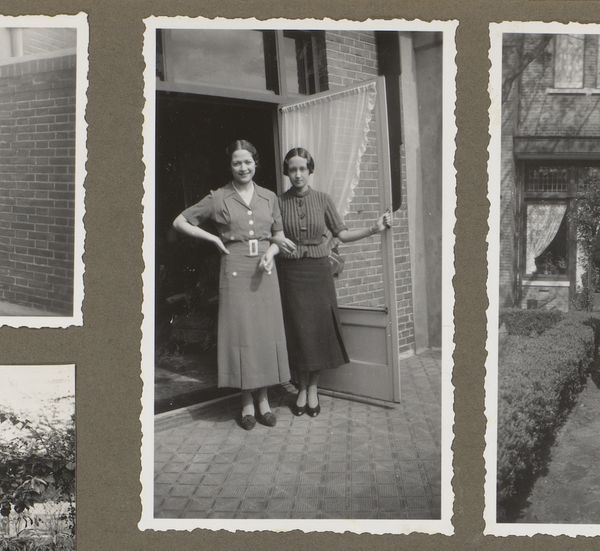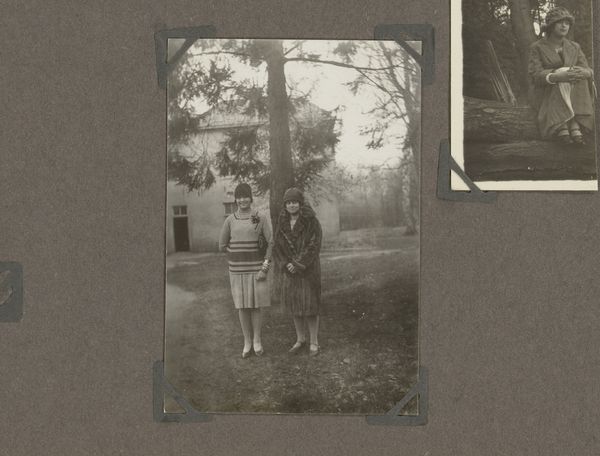
print, photography
#
portrait
# print
#
photography
#
genre-painting
Dimensions: height 104 mm, width 151 mm
Copyright: Rijks Museum: Open Domain
Curator: Editor: We’re looking at "Portret van twee meisjes op een buitenplaats" which translates to "Portrait of Two Girls in a Courtyard," a photograph, likely a print of some kind, from somewhere between 1860 and 1900 by John George Kirby. It’s… rather stark, isn't it? Their dresses seem simple, almost uniform-like. What’s striking to you about it? Curator: The focus here isn’t really on artistry, in the traditional sense. Look closely at the clothing, the rough yard. This is a document of labour. These dresses, made of simple materials, speak to a certain social class and the economics of dressmaking at the time. Notice the rather utilitarian background, with fences and what seems to be discarded lumber. It's less about aesthetics and more about recording a social reality. Editor: So, it's about the act of documenting, and what that act says about the people involved? It feels almost intrusive now, even though that wasn’t probably the intent back then. I’m thinking of the materials used. How does photography as a new medium affect how people perceive themselves? Curator: Exactly. Early photography democratized portraiture. Oil paintings were for the elite. Photography allowed more social classes to participate in image making and self-representation. What was previously considered 'high art' and reserved for certain classes was suddenly more accessible. Think about the production process. There's the photographer's labor, the developing chemicals, and the printing process. How did that impact the art world at the time? Editor: That makes sense. It challenges the traditional boundaries of art and craft. I’m now looking at the edges, with the name of the studio - J. Kirby - prominently displayed. It’s as if he is also saying ‘I was here, I did this’. Curator: The very existence of this photograph underscores how image-making shifted from commissioned artwork to a service, and in effect an accessible consumer good. These young ladies, and families like them, are consuming images differently from previous generations, too. Editor: Wow, I hadn't considered photography through the lens of production and labor before. Curator: It opens up a whole new understanding, doesn't it? Considering art's place within social and economic contexts always does.
Comments
No comments
Be the first to comment and join the conversation on the ultimate creative platform.
